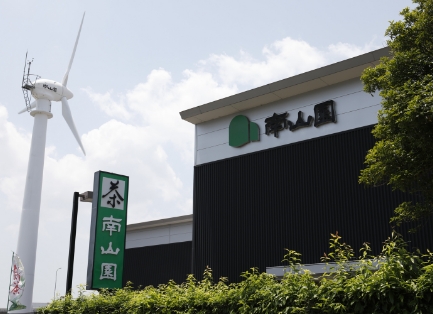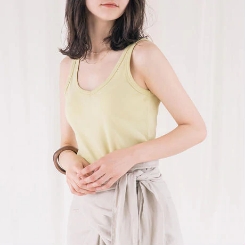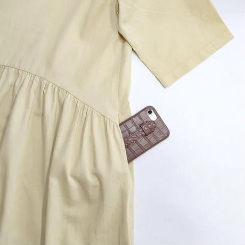FOOD TEXTILE STORY vol.3
I feel there is great innovative potential derived from the cooperation
between local matcha company x the apparel industry.
2022.06.15
Nanzan-en Tea Corporation
Managing Director
Shinsuke Tomita
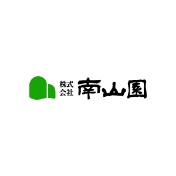
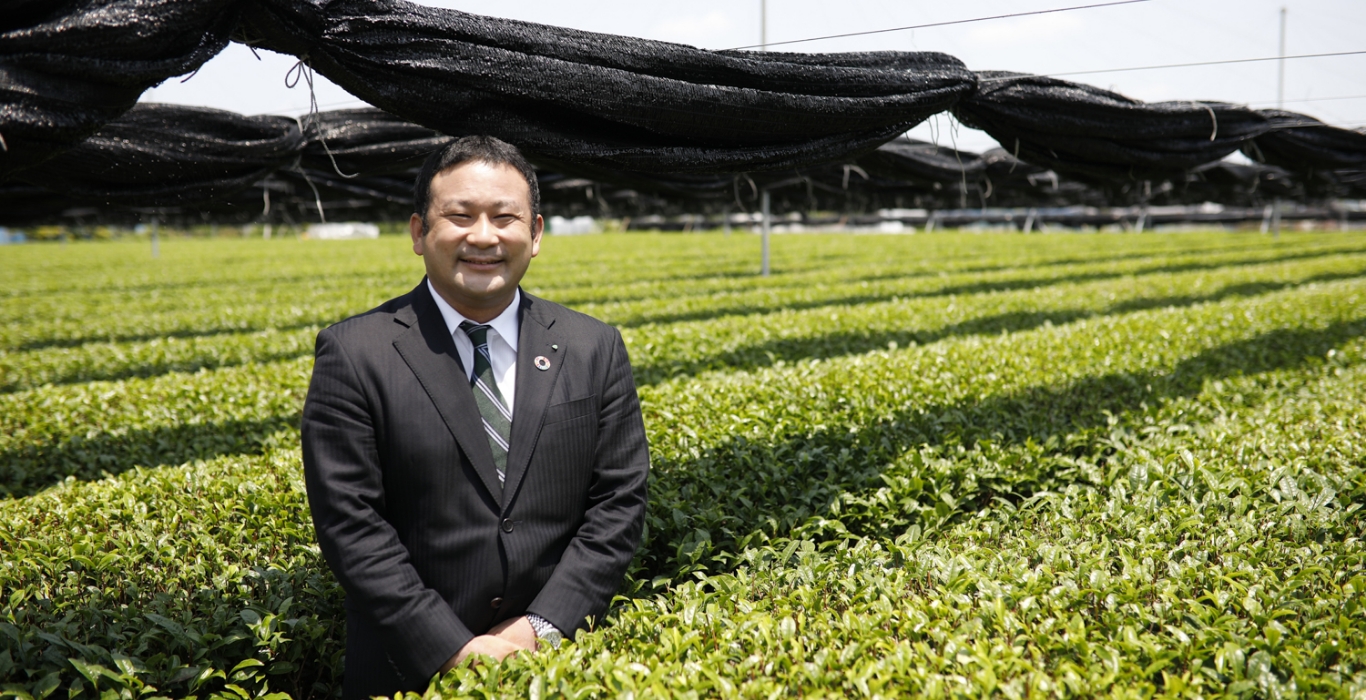
Nanzan-en Tea Corporation
Managing Director
Shinsuke Tomita
Nishio’s matcha is produced in a rich natural environment based on traditional technique.
A large eye-catching windmill is located on a cape along Yahagi River.
That is the landmark of Nanzan-en. The history of Nanzan-en, a tea farm founded in this area known as the “Nishio Matcha” brand, goes back to the latter half of the Meiji Era.
The tea farm spread throughout an endless flatland under the glaring sun has received abundant blessings from its natural environment.
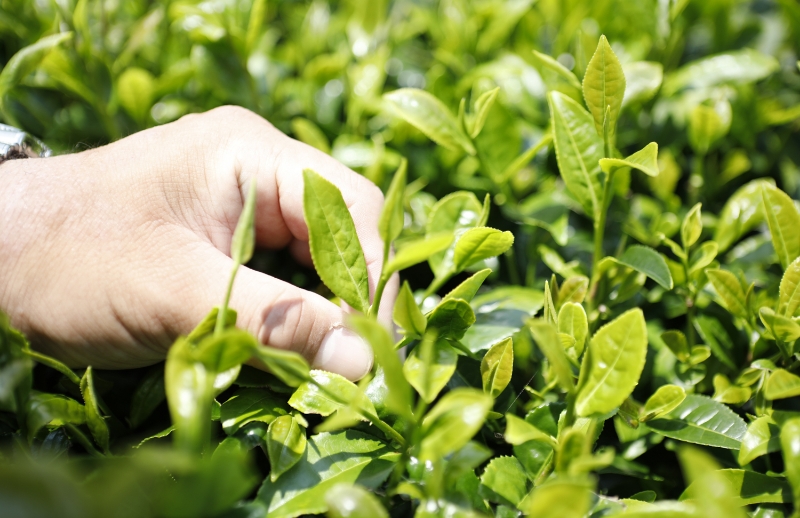
“Tencha, the tea that matcha is made from, is cultivated by placing a black sun shield onto the terraced field when the sprouts begin growing.
Tea farms are spread on both sides of the Yahagi River and it has long been said that the fog from the river serves as a natural sun shield, making it an ideal environment for matcha cultivation.”
Mr. Tomita, the Managing Director, says he wears a green tie almost daily. A man with a somewhat mischievous personality and a strong devotion to tea, Mr. Tomita is the 4th generation executive. He further explains the reason why tencha cultivation became popular.
“In addition to an optimum natural environment, the neighboring Okazaki City is a stone-producing area and makes stone mills.
A major contributing factor for the flourishing tencha cultivation was the access to high-quality stone mills.”
At Nanzan-en, traditional stone mills are used to produce the highest-quality matcha in turning tencha into matcha. The power to run the stone mills is generated partly from wind-powered generators in the factories mentioned at the outset. Our appreciation for the blessings of nature is embodied in the windmill.
We have an integrated production system from cultivation to matcha production that is virtually unprecedented in Japan.
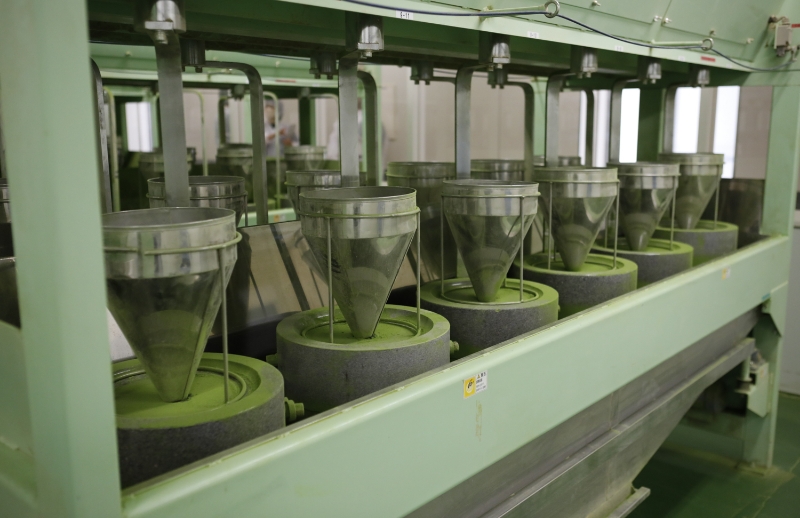
A fully integrated production system from cultivation to final products made by their own farm and factory , which is rarely seen nationwide.
“The greatest feature of Nanzan-en can be said to be the integrated operation from the cultivation of tea leaves to processing, retail sales, and overseas export. We are originally tea farmers.
It is rare for a tea company to make tea leaves in Japan, much less in Aichi. Our strong point is that we are at one with tea from the soil preparation stage.”
Nanzan-en’s matcha is used widely for products catering to Urasenke tea ceremonies and food processing products. We provide made-to-order matcha for various uses such as confectionery, bread, and chain cafes.
It is not unusual to see Nanzan-en’s matcha used for popular sweets, not mentioning the names. In using great quantities of matcha, naturally there are some non-standard matcha manufactured during the production process that cannot be sold.
“To aim for consistent quality, we filter and sort out matcha of inferior quality. We do not want to dispose of matcha that cannot be sold, so we return it to nature, meaning the matcha residue is composted and sprinkled back onto the tea fields.
It serves as an auxiliary fertilizer. Up to now, it has been a normal thing to sprinkle matcha residue, so this development was beyond our wildest dreams,” states Mr. Tomita.
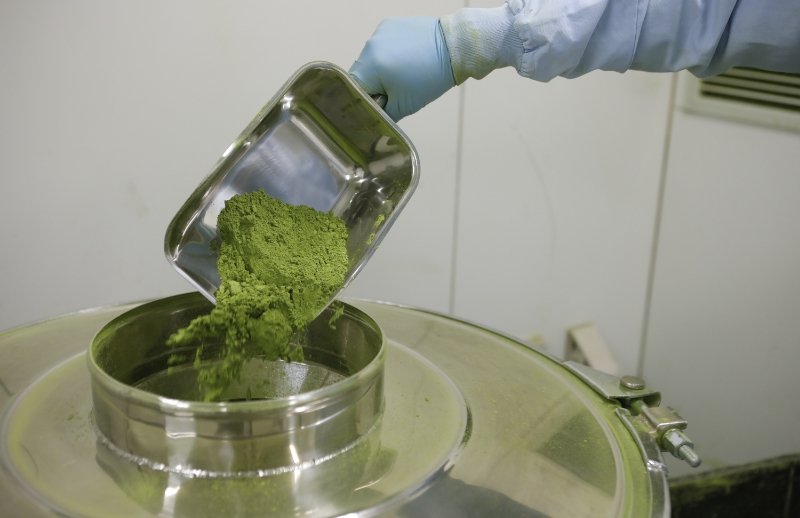
A new potential was made possible through cross-industry collaboration.
FOOD TEXTILE, which was in search of green dye, was drawn to the local Nishio matcha.
When FOOD TEXTILE came to us with a business proposal, Mr. Tomita was surprised and asked, “why apparel?” We mainly handled matcha for food processing, but in recent times, matcha has been used as a cosmetic ingredient. However, the apparel sector was completely unexpected. When Mr. Tomita reflects on the proposal back then, he remembers being excited about the new potential for matcha more than feeling insecure about it.
“When I saw the sample fabric dyed with matcha residue, the color was different from what I had expected.
I imagined it would be a more vivid green. The fabric I held was a more subdued green. It was a ‘Japanese color,’ just what I was looking for.”
The green which could only be produced from matcha was refreshing and gentle as a breeze blowing through trees with fresh green leaves.
The color that comes into your eyes has the mysterious power of calming your soul.
“I was honestly surprised at this achievement. Grinding matcha with a millstone has remained unchanged for several hundreds of years.
It was done as a matter of course and we took pride in doing everything on our own. However, thanks to our encounter with FOOD TEXTILE’s outstanding technique transcending the boundaries of our company and industry, a completely new potential for matcha was drawn out. “
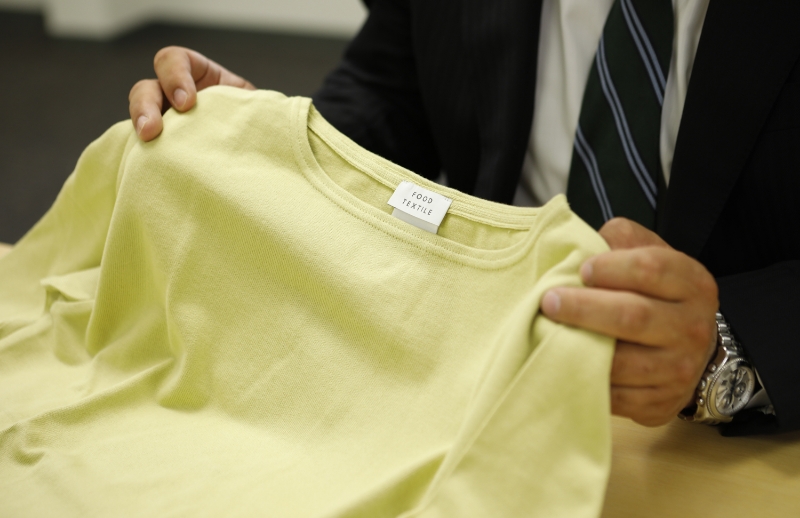
Continuity and change. That is what FOOD TEXTILE taught us.
Presently, the residue from the matcha produced at Nanzan-en is being used in various FOOD TEXTILE products.
This is the first time for Nanzan-en that matcha is used for apparel. Mr. Tomita says this has a great significance.
“We are just producing matcha for processing, so our company name does not appear in the final product. However, we decided to have our name on this product. For us, it is the “one and only” initiative. We are proud of the high-quality product and seeing the company name on it is encouraging for the employees. Everyone at FOOD TEXTILE always share information with us, such as what kind of product will be produced and what shade of green it will be, etc. It was the first time we felt that we are in a cooperative relationship and that we are not just working behind-the-scenes, as we were traditionally. We were drawn to FOOD TEXTILE’s passion to transform their thoughts into reality.”
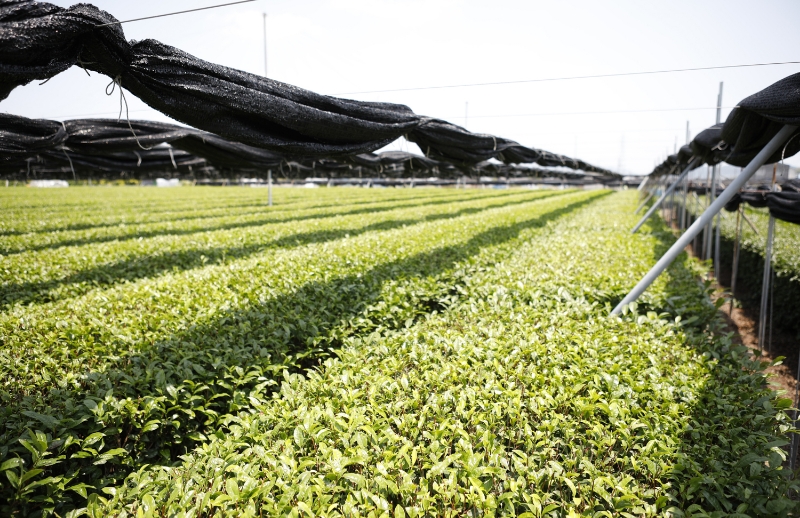
An encounter of people from different fields leads them to a new direction. Mr. Tomita prides himself in having worked diligently with utmost care and upholding tradition.
On the other hand, he feels that exploring the new possibilities of matcha to meet the needs of the times is important, not only for the company but also for the “Nishio Matcha” brand.
“‘Stop being mottainai (wasteful) right away’ is our corporate motto. We’re perfect for FOOD TEXTILE,” says Mr. Tomita .
All the matcha residue that was formerly sprinkled onto the tea fields are now stored for FOOD TEXTILE.
They are making a system so that they can provide any quantity at any time.
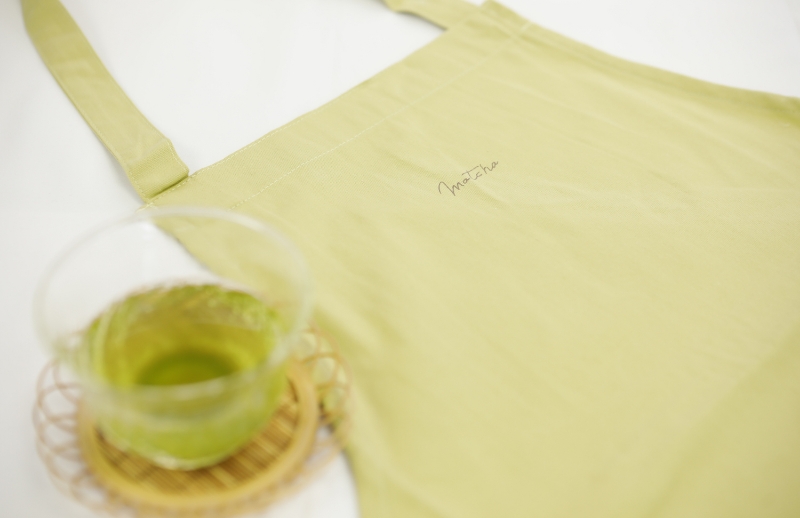
“Actually, I have a request…I would like to have a uniform made from fabric dyed from our matcha. I’m sure we’ll feel something special when we wear it. I have another request. Could you make a necktie, too? I want to have several green ties. I can spark a conversation by telling someone ‘This tie was dyed from our matcha’.” Mr. Tomita laughed mischievously.
TEXT/ MASHIMO SATOKO
PHOTO/ SUZUKI AKIHIKO
FOOD TEXTILE Item
Matcha color popular for its gentle tone
Sold at FOOD TEXTILE’s online store.(https://contents.textile-net.jp/supplier_list/food-textile/index.html)
